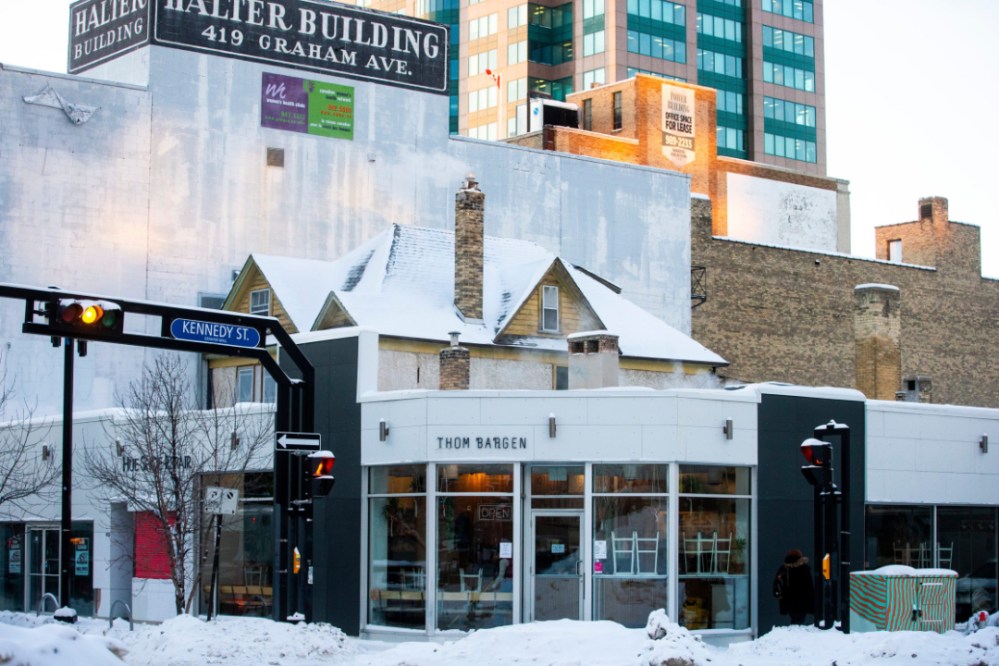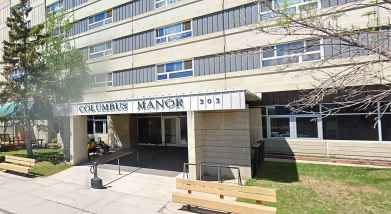Solving the downtown puzzle, one piece at a time
Read this article for free:
or
Already have an account? Log in here »
To continue reading, please subscribe:
Monthly Digital Subscription
$0 for the first 4 weeks*
- Enjoy unlimited reading on winnipegfreepress.com
- Read the E-Edition, our digital replica newspaper
- Access News Break, our award-winning app
- Play interactive puzzles
*No charge for 4 weeks then price increases to the regular rate of $19.00 plus GST every four weeks. Offer available to new and qualified returning subscribers only. Cancel any time.
Monthly Digital Subscription
$4.75/week*
- Enjoy unlimited reading on winnipegfreepress.com
- Read the E-Edition, our digital replica newspaper
- Access News Break, our award-winning app
- Play interactive puzzles
*Billed as $19 plus GST every four weeks. Cancel any time.
To continue reading, please subscribe:
Add Free Press access to your Brandon Sun subscription for only an additional
$1 for the first 4 weeks*
*Your next subscription payment will increase by $1.00 and you will be charged $16.99 plus GST for four weeks. After four weeks, your payment will increase to $23.99 plus GST every four weeks.
Read unlimited articles for free today:
or
Already have an account? Log in here »
Hey there, time traveller!
This article was published 06/01/2023 (1073 days ago), so information in it may no longer be current.
Winnipeg has a doughnut problem that has nothing to do with yeast, flour, hot oil or glaze.
The hole in this figurative doughnut — the downtown area — is the challenge the entire city, its business community and all citizens must confront after having spent decades taking the area for granted.
Perhaps the biggest obstacle in addressing Winnipeg downtown’s dilemma is the massive scope of the challenge. The many interconnected complications plaguing downtown have created a paralysis that makes figuring out where to start a big part of the problem.
The COVID-19 pandemic has inflamed this passel of problems, which were brought to light in a recent Free Press series titled Downtown: A Core Concern.
A core concern: a series exploring downtown Winnipeg

Posted:
As part of an ongoing series, the Free Press is turning its focus to Winnipeg's downtown area, exploring the state of the city's core, and what can be done to improve it.
The series delved into the issues that have turned Portage and Main and the surrounding streets, which once bristled with businesses large and small and residences of various sizes, into a come-and-go area where post-secondary students study and leave, and suburban sports fans and arts patrons shower their applause and then zoom away in their SUVs.
A daunting list of downtown difficulties was exposed: rising office vacancy rates that have shot up past 16 per cent; the closure of dozens of shops and businesses that counted on office employees who began working from home during the pandemic and haven’t fully returned; a shortage of affordable housing options and amenities such as grocery stores to attract new downtown residents; and a lack of civic and political will to support those without homes or with addictions whose presence has added to downtown’s reputation for being a dangerous place.
An ideal way — perhaps the only feasible way — to regenerate downtown Winnipeg is to tackle one piece of the puzzle at a time, and to try to link them together to build a new downtown that points to current and future needs rather than past glories.
The post-pandemic economy of high inflation and interest rates has put the onus on governments to partner with the private sector on some of these plans.
“I think the city needs to look at the next couple of years and determine, ‘Where do we want that trend line to go?’” Angela Mathieson, CentreVenture’s president and CEO, said in an interview for the Free Press series. “To some degree, government attention to the downtown really drives private investment … it breeds a sense of optimism.”
Attracting more people to call downtown home, using combinations of low-cost and premium housing, is a worthy first step toward a better downtown because shops, restaurants and other amenities will go to where people live.
Those efforts began prior to the pandemic, when a former passport building on Main Street became an apartment block and Carlton Street offices were converted into residential properties.
MIKE DEAL/WINNIPEG FREE PRESS FILES The Bay’s former flagship store in downtown Winnipeg.
The brightest light in the downtown tunnel flickered to life last April when the Hudson’s Bay Company building on Portage Avenue — downtown’s most notable fixer-upper — was transferred to the Southern Chiefs’ Organization.
The SCO, which represents 24 First Nations in Manitoba, plans to spend $130 million transforming the 655,000-square-foot historic site into 300 affordable housing units and assisted living for Indigenous elders, as well as businesses, restaurants and public spaces.
Funding from the federal and provincial governments, through trust funds and forgivable loans, as well as tax incentives from the City of Winnipeg, helped the project begin.
What the development known as Wehwehneh Bahgahkinahgohn becomes can be a beacon of hope for the rest of downtown. Its significance cannot be overstated; not long ago, the idea of turning the shuttered Bay department store into anything worthwhile seemed as far-fetched as so many other downtown-revitalization strategies.







